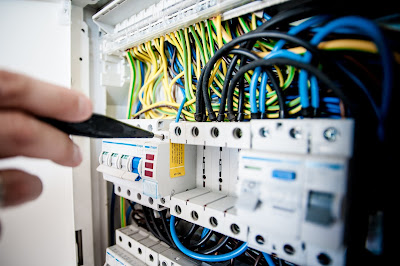Natural gas garage heaters blow air straight into the room. Their adjustable louvers permit
for perpendicular adjustment of the flow. Almost all the manufacturers provide
horizontal louvers that help the air to flow side-to-side. These furnaces have
several different categories based on the design of the heat exchanger and the
venting type:
These forms of heaters are becoming popular by the day. While the conventional power and gravity furnaces make use of space air for ignition, separated combustion furnaces are sealed. These heaters have a couple of flue vent pipes. While one pipe is used to draw in the air from the atmosphere, the other throws the by-products outside. This sealed combustion design removes the possibility of the burning of air inside the garage.
Traditional natural gas furnaces for the garage:
Types of
Venting
Gravity vented
garage furnace:
Gravity
vented garage furnaces
are heaters that vent naturally and do not need a fan. These furnaces make use
of the air inside the garage for ignition. The warm derivatives of combustion
come out of the furnace with the help of a gas pipe. They are the least
expensive.
Power vented
furnace:
Very similar
to the gravity vented furnace, these devices have an additional flue-vent
booster fan. As soon as the heat is produced, the fan starts to make sure that
the derivatives of combustion are properly vented out. These furnaces are the
most popular among consumers. The booster fan gives more elasticity with flue
pipe.
In fact, most
of the major manufacturers of heating, devices are eliminating the production of
gravity vented furnaces and are substituting them with power vented heaters.
These heaters also allow horizontal venting.
 |
| Image Courtesy: Pixabay |
Separated combustion
furnaces for the garages:
These forms of heaters are becoming popular by the day. While the conventional power and gravity furnaces make use of space air for ignition, separated combustion furnaces are sealed. These heaters have a couple of flue vent pipes. While one pipe is used to draw in the air from the atmosphere, the other throws the by-products outside. This sealed combustion design removes the possibility of the burning of air inside the garage.
Such heaters
work well in places where fine dust particles can catch fire due to an open
flame. Moreover, separated combustion furnaces are normally more competent, as
they do not make use of the air in one’s space for ignition.
Heat exchanger
designs:
Traditional natural gas furnaces for the garage:
These
furnaces are narrow and tall. However, since most find them inconvenient,
manufacturers are turning towards the newer exchanger designs.
Tubular heat exchanges:
These
exchanges are flexible and defy cracking. They allow the furnace to be shorter
and wider, which is of great assistance in garages that lack overhead
clearance.
How are natural
gas
garage heaters installed?
Following is
the method by which one can install these furnaces
• Hang the furnace by making use of the angle iron or threaded rods. Several heaters contain angle iron which helps them mount straight to the ceiling. However, do remember that when you are mounting a heater you need to follow specifications as to how close the furnace can be mounted to a ceiling or object.
• Install the gas piping.
• Install the vent pipe.
• Wire a wall thermostat (with a low voltage) to the terminal strip of the furnace.
• Wire the elevated voltage power needed to start the furnace.
Natural gas garage heaters are capable of running any time. They do not
require a person to worry about the fuel supply. However, it is best to get in
touch with an HVAC expert if you need help with the installation or maintenance of the equipment.









